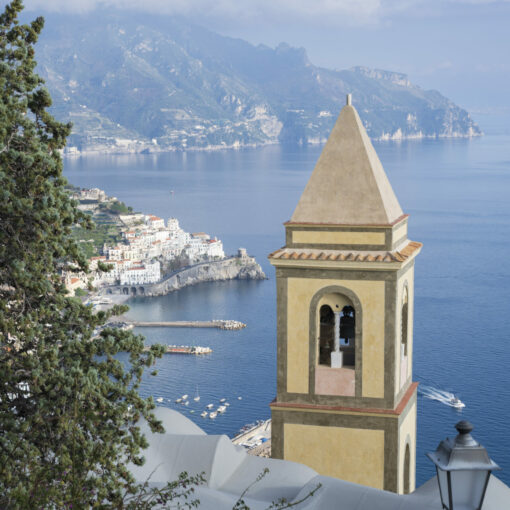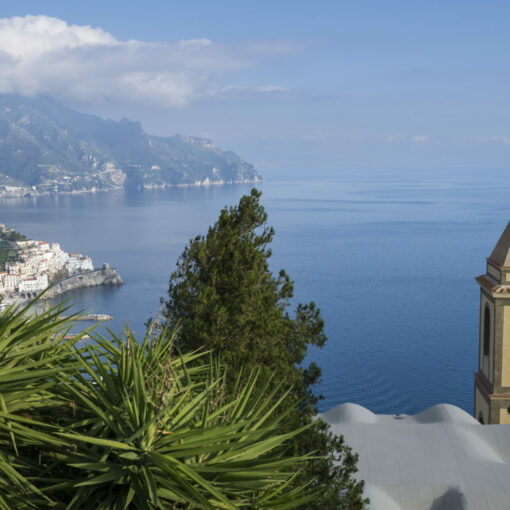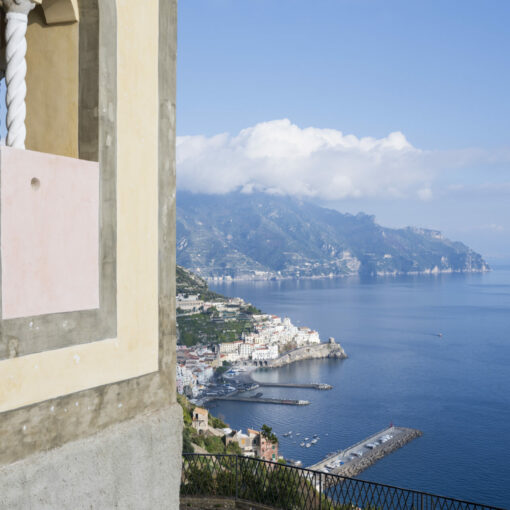The Church of Madonna Assunta, located in the village of Pastena and documented since 1319, consists of two naves covered by pointed cross vaults that are supported by a row of central masonry pillars.
Various rooms open up along the left side: the first – which can also be accessed from the atrium – houses the stone baptismal font; this is followed by the sacristy, the Chapel of the SS. Sacramento with a small altar made in the 1960s, and another space with an ancient organ.
The two naves, lit by three double lancet windows with a central marble column, end with as many apses. The one on the right holds the mannerist style panel of the Assunta by the paint Giovannangelo d’Amato from Maiori, while in front of the apse in the other nave we find the high altar, also made in the 1960s, with marble columns and capitals on which the altar rests. The medieval wooden cross, declared to be miraculous by the historian Francesco Maria Pansa, is still positioned over the high altar.
The oldest work of art preserved in the church is a Roman cinerary urn, placed in the sacristy above a column rhombus and currently used as a washbasin; if features a table with a Latin inscription enclosed between two twisted columns with Ionic capitals.



